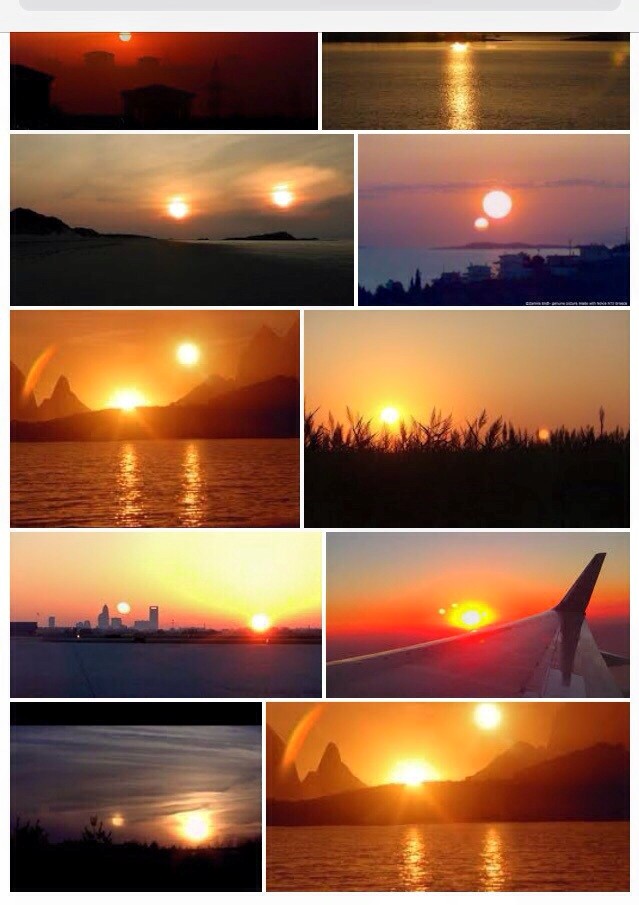Origin
On 4 November 2015 a Facebook user published three photographs (two singles and one combined set) with remarks asserting that the images depicted a phenomenon called a "Hunters Moon":
The Miracle has happened yesterday. USA and CANADA saw two suns. This is called as Hunters Moon. Due to change of orbit the sun sets and moon rises at the same time with both being opposite to each other at a particular angle or degree moon reflects the sun so bright that it almost feels like another sun. Effects stays for couple of days
According to the claim, the occurrence of a Hunter's Moon allows some residents of North America to view what appears to be two suns in the sky. However, the nomenclature used was inaccurate, as a Hunter's Moon has nothing to do with the optical illusion of two suns:
Hunter’s Moon is just a name. It's the name for the full moon after the Harvest Moon, which is the full moon nearest the autumnal equinox. In the Northern Hemisphere, the Harvest Moon sometimes falls in September and sometimes falls in October. So the Hunter's Moon sometimes falls in October and sometimes in November.
Hunter's Moon is just an ordinary full moon with a special path across our sky. Most Hunter's Moons aren't really bigger or brighter. They're definitely no more colorful than any other full moon. Still, many of us do think the Hunter's Moon always looks bigger ... or brighter ... and more orange than usual.
The first full moon after the autumnal equinox (known as the Hunter's Moon) occurred on 26 and 27 October in 2015 and not 3 November 2015, as the Facebook post suggested. As for the appended photographs, two of them were unrelated to the full moon of 26-27 October 2015.
One of the most reliable markers of a story later fabricated to fit an existing photograph is earlier publication of an identical picture. In this case, both photographs of a "Hunter's Moon" were published to an Arabic-language message board on 13 October 2015 (prior to the year's Hunter's Moon) with a markedly different explanation of their origins (roughly translated as follows):
Pictures of a strange phenomenon broadcast in Canada illustrate the emergence of a Shamseen sky in Canada, England, China, and Russia. An astronomer said that this phenomenon is very normal and is a result of a convergence with Jupiter and the reflection of sunlight back to Earth. This phenomenon occurs every 139 years.
The claim preceding the "two suns" rumor attributed the purported phenomenon to the visibility of Jupiter, and maintained that it occurred approximately once every century and a half (but in fact, Hunter's Moons occur annually).
Another 31 August 2015 article in Arabic definitively illustrated that the photographs dated back at least that far, placing the depicted skyline in Tunisia (not in the United States, Canada, England, or Russia). The image featuring mountains was even older (appearing online as early as July 2008), and offered yet another explanation for the "two suns" phenomenon:
Social networking picked up an image taken at sunrise on Sunday in the Moroccan city of Tangier. Scientists stressed that it is a natural phenomenon that appears at sunrise and results from ice crystals accumulating in the atmosphere, with sunlight reflecting on those "crystal pools" and creating what seems like a second sun.
While the first full moon after the autumnal equinox is called a Hunter's Moon, that designation is simply a name which has no relationship to an illusion of duplicate suns in the sky. Images circulating on social media along with the rumor were published before the late October 2015 Hunter's Moon and thus weren't depictions of that event.



